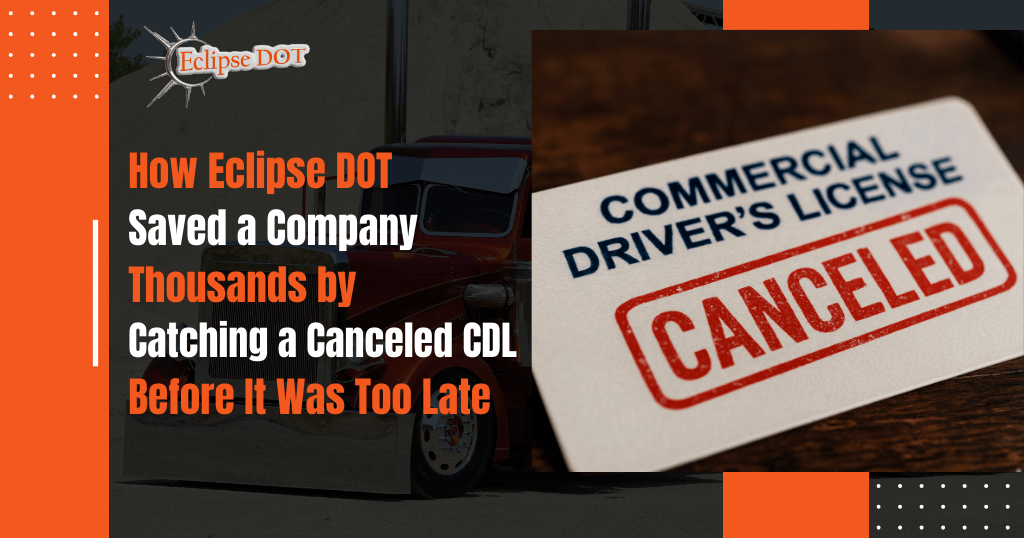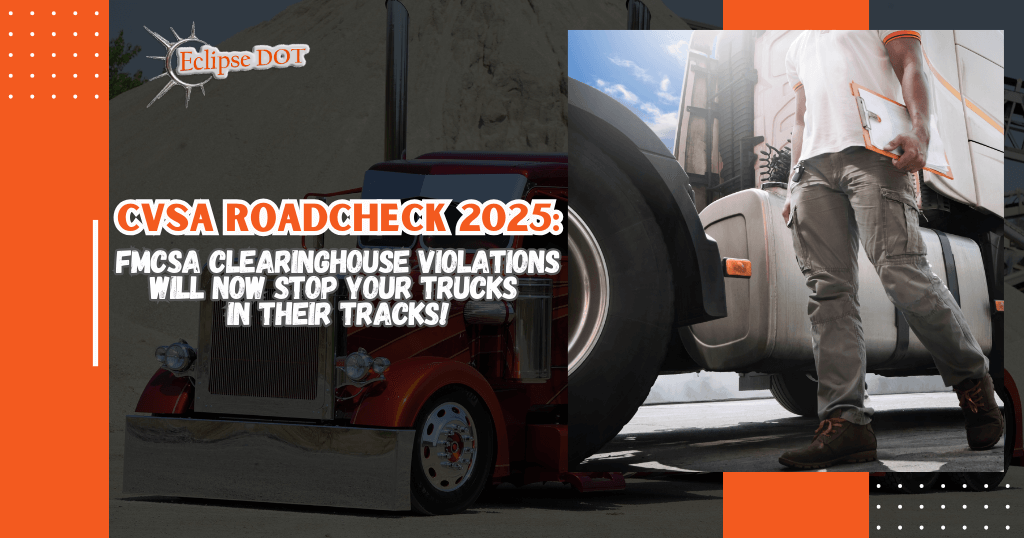No products in the cart.
Roadside Inspections
Hey there, folks!
Today we’re going to talk about something that every driver needs to know about: roadside inspections. As a commercial driver, you are subject to inspections at any time, and it’s important to know what to expect and how to prepare for them. Let’s dive in!
What is a Roadside Inspection?
A roadside inspection is exactly what it sounds like. It’s an inspection of your truck and your paperwork that takes place on the side of the road, usually at a weigh station or other designated inspection site. The purpose of these inspections is to ensure that your truck is in compliance with federal regulations, that your paperwork is up-to-date, and that you’re operating safely.
What to Expect During a Roadside Inspection
The inspection itself will typically take between 30 minutes and an hour, depending on how thorough the inspector wants to be. During that time, the inspector will look over your paperwork and examine your truck. Here’s what they’ll be looking for:
- Driver’s License and Medical Card: The inspector will want to see your driver’s license and your medical card to ensure that you’re legally allowed to operate a commercial vehicle and that you’re in good health.
- Hours of Service (HOS) Logs: The inspector will examine your HOS logs to make sure that you’re not exceeding the maximum number of hours you’re allowed to drive in a day or a week.
- Registration and Insurance: The inspector will want to see your truck’s registration and proof of insurance to ensure that everything is up-to-date.
- Vehicle Inspection: The inspector will conduct a visual inspection of your truck to make sure that everything is in working order. They’ll check your brakes, lights, tires, and other important safety features.
- Cargo Securement: If you’re carrying cargo, the inspector will check to make sure that it’s properly secured and not likely to shift or fall off during transport.
- Hazardous Materials: If you’re carrying hazardous materials, the inspector will conduct a more detailed inspection to ensure that you’re following all of the regulations regarding the transport of these materials.
Types of Roadside Inspections
There are different types of roadside inspections. The most common type is the North American Standard Inspection, which is conducted by the Commercial Vehicle Safety Alliance (CVSA). This inspection is the most comprehensive and includes all of the elements mentioned above.
Other types of inspections include:
- Level 1 Inspection: The most thorough inspection.
- Level 2 Inspection: A walk-around inspection that doesn’t include an examination of your HOS logs.
- Level 3, 4, and 5 Inspections: Less comprehensive and focus on specific areas of your truck and paperwork.
It’s important to know what type of inspection you’re facing so that you can prepare accordingly. For example, if you know you’re facing a Level 1 inspection, you’ll want to make sure that all of your paperwork is in order and that your truck is in tip-top shape.
Be Prepared for Roadside Inspections
Roadside inspections can happen at any time. They’re typically conducted at random, but they can also be triggered by a number of factors, such as a violation or a complaint from another driver. That’s why it’s important to always be prepared.
One way to be prepared is to have a pre-inspection checklist that you go through before hitting the road. This checklist should include all of the elements that an inspector would be looking for, such as your driver’s license, medical card, HOS logs, registration, insurance, and a visual inspection of your truck. By going through this checklist every time you hit the road, you’ll be able to catch any potential problems before they become a big issue during an inspection.
Stay Up-to-Date on Regulations
It’s also important to stay up-to-date on the latest regulations and requirements. The trucking industry is constantly evolving, and new rules and regulations are being introduced all the time. By staying informed, you can make sure that you’re always in compliance and ready for any inspections that come your way.
Conclusion
In conclusion, roadside inspections are a fact of life for truckers, and they can be a bit of a hassle. But by staying prepared, being polite and cooperative with inspectors, and staying up-to-date on the latest regulations, you can make the process go as smoothly as possible. Remember, the goal of these inspections is to keep everyone safe on the road, so embrace them as a necessary part of your job as a trucker.
That being said, there are a few things you can do to make the process go more smoothly. First, make sure that all of your paperwork is in order and easily accessible. You don’t want to be fumbling around for your registration or insurance card while the inspector is waiting. Second, do a pre-trip inspection before you hit the road. Check your brakes, lights, tires, and other safety features to make sure that everything is working properly. This will not only help you pass a roadside inspection but also keep you and other drivers safe on the road. Finally, be polite and cooperative with the inspector. They’re just doing their job, and being difficult or argumentative will only make the process more difficult for everyone involved.
Stay safe out there on the road!
Discover our CDL & DOT Compliance blog for an exclusive trial at DOTDocs.com. Also, claim your FREE micro audit at THE ECLIPSE DOT MICRO AUDIT. Ready for smoother operations?







One thought on “Essential Guide to Roadside Inspections for Truckers | Eclipse DOT”
Thanks for sharing. I read many of your blog posts, cool, your blog is very good. https://accounts.binance.com/bg/register?ref=V2H9AFPY